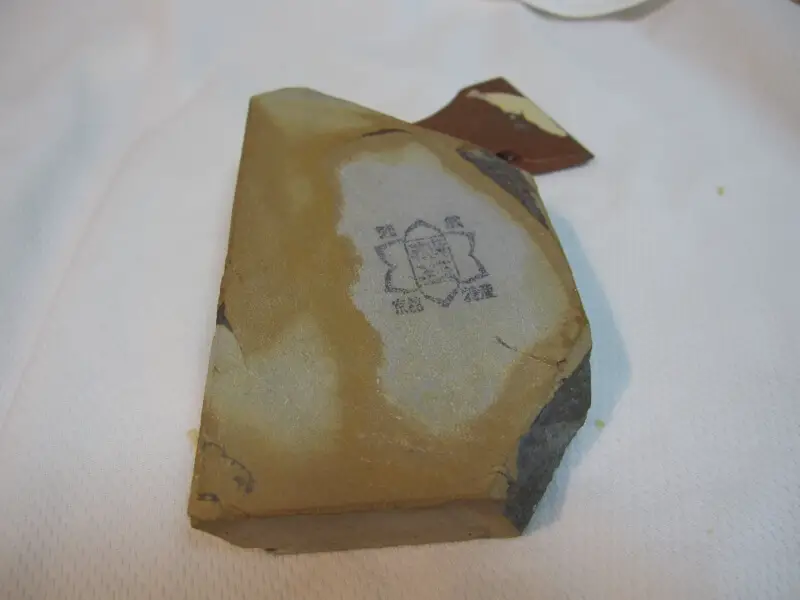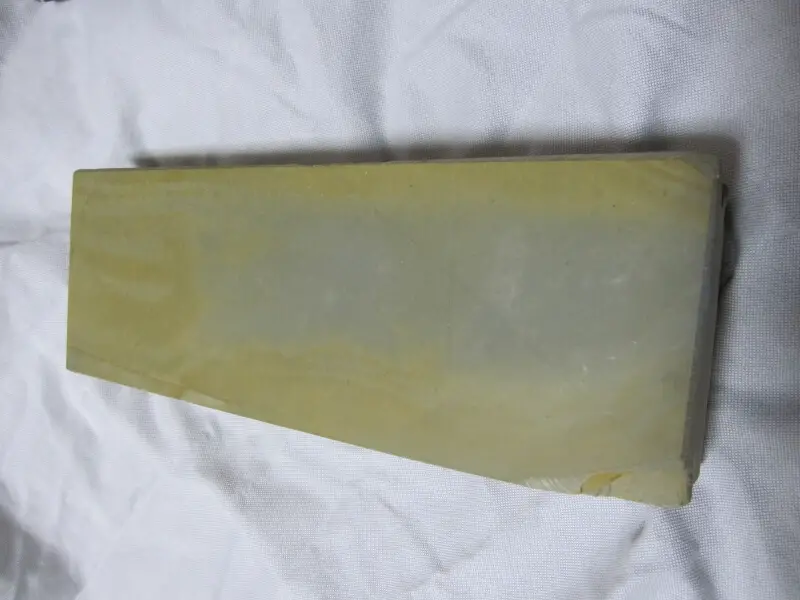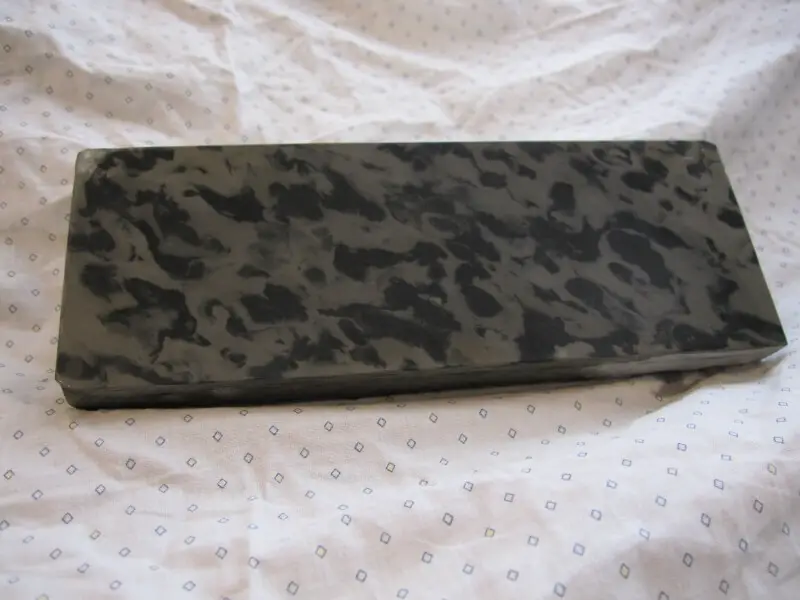
Following up on my last article, I’d like to talk a bit more in detail about Japanese whetstones and their characteristics, especially the vocabulary associated with them.
What’s in a name?
The first thing people notice when they start looking into Japanese whetstones is all the names. Nakayama Asagi Tomae. Ozuku Kiita Namito. Maruo Ikimurasaki Shikitomae. It’s all very confusing, but the sad thing is, it’s mostly unnecessary. The names we use to describe Japanese stones usually break down into three parts: The source, the color, and sometimes the layer of stone it was mined from. Of that information, the only one that we really need to worry about is the last, and this is the one that is least often used by sellers.

For example, let’s take one of the phrases from above: Nakayama Asagi Tomae. The first word, Nakayama, refers to the mountain that gave birth to the stone. Nakayama is one of the oldest, and most famous…and most expensive. Its reputation is excellent for all sorts of sharpening needs, including razors, and that’s why Nakayama stones are among the most expensive hones of all. But is it important to know that?
As I said in my last article, there are many many mines that produced these stones (almost all of them are now closed, and the stones we see these days are all old stock.) The ones we call the “Eastern” mines all produced stones of comparable quality in terms of purity, size of abrasive particles, and so on, so the name honestly doesn’t matter much. Let’s be honest: these mines are all clustered within a five mile circle or so, which in geological terms is tiny, so the stones are actually pretty much the same. The only useful information you can get from the name of the mine is whether it’s an Eastern stone or not, and if you are buying a razor stone from a reputable buyer then it really should be, and thus the name of the mine is largely irrelevant.
The next word, Asagi, refers to the color of the stone. This word, oddly, translates to “light yellow,” but the stones labeled “Asagi” are all in shades of blue or gray. Yeah, I said it was confusing.
Asagi, Kiita, Habutae, Renge, and all of the other color words are just descriptions of the aesthetic qualities of the stone. I won’t say this isn’t important, because the psychological appeal of a good looking stone can not be denied. Indeed, the craftsmen using these stones all seem to gravitate towards ones with unique or interesting patterns, leading to much higher prices for those stones. However, these colors and patterns are simply that: colors. They have almost no discernible effect on the way your stone will hone, or the quality of the edge it will leave. So while the names have some poetic appeal (who doesn’t want a “Pure white silk lotus-blossom nested pattern” on their stone?) they don’t really matter in terms of practicality.

Finally, we have the layer of rock, such as Tomae (from our example), Namito or Suita. This, finally, is actually important. You see, the place where they mine these stones is located on a ribbon of stone 12 miles long, which is layered like a cake. This layering is similar to what you can see if you look at the sides of a cliff of sedimentary rock. The deeper you go, the older and harder the stone is, and vice versa. This layering can affect the quality of the stone in many ways, and thus knowing which layer of rock your hone came from can be of real practical value. Luckily, the miners long ago realized this and gave each layer a distinct name. Unluckily, in many cases they forgot to mark the layer on the stone, and since these are all old stock it can often be difficult to name the layer. A real expert, and there are a few out there, can sometimes tell by looking but even then it’s no real guarantee.
So there you have some basic information on Japanese stones. Their history, their quality, and their use is a subject that can (and does) fill a book. If you’d like to know more, there are a couple of places I would point you to. The first is my blog (toot toot!) Eastern Smooth. I’ve spent the last couple of years compiling information and learning what I could about Japanese stones, and everything I can think of is there, including a glossary of words used with Japanese stones, explaining the mysterious words I used above. The glossary can be found here: A Japanese Hone Glossary.
Another useful site is http://www.japan-tool.com/, a commercial site which also has some invaluable information on Japanese natural stones. Check the links on the left.
In my next article, I’ll talk in a bit more detail about using these stones, and selecting one if you are looking to buy.

Nakayama is not a mountain, it’s a mine.
Comments are closed.